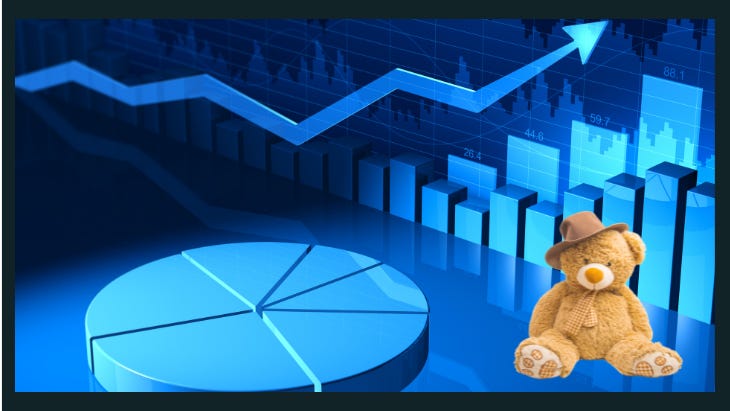Cracking the Economy Code: A Soulpreneur's Playbook
Demystify the Economy: Practical Insights for Soulpreneurs

TL;DR:
The economy is vast and interconnected, much like a Rubik’s Cube—shifting one piece often impacts others. As a soulpreneur, you can view the economy through multiple lenses: business owner, consumer, community member, family member, investor, and mission-driven leader. Paying attention to relevant economic indicators can help you navigate opportunities and challenges.Here are key insights this month:
Small Business Optimism is up: Draw inspiration from the positivity among small business owners.
Labor Shortage is easing: If hiring, plan for a thoughtful and patient process.
Consumer Confidence is down: Be mindful of customers’ cautious outlook and show them extra care.
Understanding the economy holistically ensures you’re better prepared to adapt, thrive, and align with your goals.
How much time do you spend thinking about the economy? If you’re like most soulpreneurs, probably not much—it’s there, it impacts your business, but who has time to follow every headline?
While I was walking in the dark last night, I realized it’s a lot like how I’ve followed the economy in the past: I hear something – like unemployment is down, or prices are up – I may have an idea of what that is but I couldn’t provide any detail.
The economy reminds me of the parable about the blind men and the elephant—each person has a piece of the puzzle, but no one sees the whole thing. The economy is a very large topic with hundreds of components.
With all the ways there are to look at the economy, a soulpreneur’s perspective could include:
As a Business Owner: Tracking trends for opportunities and risks.
As a Consumer: Evaluating personal spending power and how price changes affect purchases.
As a Neighbor or Community Member: Supporting local businesses and observing how the economy impacts your community.
As a Family Member: Balancing household budgets.
As an Investor: Assessing where to invest for long-term growth.
As a Mission-Driven Leader: Connecting the economy to mission-driven goals.
The economy is also a constantly moving target. It's not static. Further, some of the economic data is available in real time (like the stock market). Other pieces of information are updated only periodically -- everything from daily to quarterly or annually.
And there is much to understand. What pieces are relevant -- with hundreds of metrics to watch, it’s easy to get lost in the data. (That’s one reason I’ve struggled with today’s article.)
Back to walking in the dark, if you ignore what is happening in the economy, you may end up bumping your shin on something unexpected.
You may also get left behind. In my conversations about the economy and as I have begun paying more attention, I’ve noticed much of what my audience has in mind today is something that happened years ago. Like the dramatic swing the pandemic had on the economy. We’ve recovered, to a surprising degree, from the pandemic, and yet our memory of it is still fresh in our memories.
You could also focus on one single element, like the price of eggs. But focusing on one indicator misses so much. While prices have risen, so have wages and the stock market. By focusing only on the price of eggs, you miss out on the opportunities before you.
You might think of the economy as a Rubik’s Cube — fix one side, and another shifts out of alignment. It’s a delicate balance requiring constant adjustment.
Having a more holistic perspective helps to understand how the pieces impact one another -- optimism about the new administration goes up one week. Only to see stocks go down again the next when the administration nominates an anti-vaxxer to be Secretary of Health and Human Services.
With all this in mind, here are some economic indicators that I’m paying attention to this month:
Small Business Optimism is up:
The NFIB Small Business Optimism Index rose by eight points in November to 101.7, after 34 months of remaining below the 50-year average of 98. This is the highest reading since June 2021.
The Index rose again in December by 3.4 points to 105.1, The highest reading since October 2018.
How to use this: No matter your perspective, draw inspiration from the optimism of other small business owners. Momentum and mindset matter. Use this energy to fuel your own goals and plans.
Labor shortage is easing:
The NFIB also reported that 35% (seasonally adjusted) of small business owners reported job openings they could not fill in December, down one point from November.
https://www.nfib.com/news-article/monthly_report/jobs-report/
How to use this: If you’re hiring, patience and care are still essential. While things are easing, plan for the process to take time, and prioritize finding the right fit over rushing.
Consumer Confidence is down:
Consumer Confidence Index® declined by 8.1 points in December to 104.7
“Consumer views of current labor market conditions continued to improve, consistent with recent jobs and unemployment data, but their assessment of business conditions weakened.” - Dana M. Peterson, Chief Economist at The Conference Board
How to use this: Even if business optimism is high, remember that your customers may feel differently. Show them extra care—whether that’s through kindness, exceptional service, or value-driven offers—to build trust and loyalty.
Thanks for reading Rousing Prosperity! Subscribe for free to receive new posts and support my work.
How do you feel about the economy? What would you like to understand better? Let me know in the comments!
Share this with a friend!






These are good insights, Stef. Thanks for sharing.